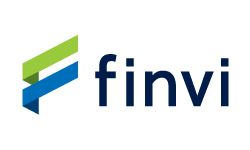Artificial intelligence is transforming the debt collection industry by automating processes, personalizing communication, and increasing collection efficiency. AI-driven 
Key AI Applications in Debt Collection
-
Predictive Analytics: AI analyzes debtor behavior and payment histories to assess risk and forecast repayment likelihood, helping agencies prioritize accounts more effectively.
-
Automation: Routine tasks like sending reminders, processing documents, and responding to common customer queries are handled by AI, allowing human agents to focus on complex cases.
-
Personalization: Machine learning enables tailored communication, such as offering custom payment plans or optimizing message timing and channel based on individual behavior.
-
Compliance Monitoring: AI tools automatically check for adherence to regulations and policies, identifying potential compliance violations in real time.
Benefits for Agencies and Customers
-
Efficiency and Cost Savings: Agencies have seen up to 8 times faster operations, 2-4 times higher productivity, and operational costs reduced by as much as 70%.
-
Higher Recovery Rates: Predictive and behavioral scoring models have improved collection rates by 25% or more, while personalized approaches drive more successful outcomes.
-
Enhanced Customer Experience: AI-powered virtual agents foster more empathetic and respectful engagement, leading to higher debtor satisfaction and better long-term relationships.
Industry Trends and Future Outlook
-
AI-powered debt collection is growing rapidly, with the market projected to reach $15.9 billion by 2034.
-
Ongoing advancements in natural language processing, data analytics, and generative AI continue to refine strategies, automate more complex processes, and strengthen compliance.
AI is expected to remain a central force in debt collection, enabling smarter, more ethical, and more effective recovery methods for both organizations and consumers.
Predictive analytics improves recovery rates in debt collection by helping agencies identify which accounts are most likely to pay, prioritize collection efforts, and tailor outreach to individual debtor profiles. Organizations using these models have reported up to a 25% improvement in recovery rates, with some seeing a 27% boost and a significant reduction in collection time.
Key Mechanisms
-
Prioritization of Accounts: Predictive scoring gauges the likelihood of repayment for each account, allowing agencies to focus resources on high-potential cases and use less costly methods for low-risk accounts.
-
Targeted Communication: Advanced analytics select the optimal time, channel, and message for customer engagement, which improves contact and payment rates while reducing complaints.
-
Early Intervention: Predictive models highlight at-risk accounts before they become seriously delinquent, enabling proactive outreach with appropriate payment options or financial support programs.
Results and Benefits
-
Enhanced efficiency lowers operational costs and speeds up cash flow, with many agencies achieving up to 8 times faster operations and recovering up to 70% of outstanding debts within the first week of intervention.
-
The use of behavioral scoring further refines strategies, supporting more ethical, empathetic, and effective engagement with debtors.
Predictive analytics thus offers a data-driven route to stronger, smarter, and more customer-focused debt collection.




